Digital Marketing Strategy : Shifting Dynamics in Social Media
Shifting Dynamics in Social Media – it is continuously evolving, showcasing varying rates of user engagement and platform growth. Over the past few years, TikTok has emerged as a significant player in this domain, experiencing meteoric growth during the pandemic as individuals sought new forms of entertainment and connection during lockdowns. Its bite-sized videos and algorithmic feed captivated millions, leading many to believe it would dominate the social media sphere. However, the year 2024 has revealed a remarkable shift in online engagement trends. Surprisingly, Instagram and Pinterest have not only maintained their relevance but have also surpassed TikTok in user growth, raising questions about the sustainability of TikTok’s explosive popularity.
Instagram, originally launched as a photo-sharing application, has successfully evolved by incorporating new features such as Stories, Reels, and shopping capabilities, thus appealing to a broader audience. It has leveraged its extensive user base to remain competitive in the ever-changing digital ecosystem. Similarly, Pinterest, a platform centered around discovery and inspiration, has seen a resurgence. Its focus on visual content and lifestyle interests has attracted users seeking curated ideas for projects, fashion, and cooking, further contributing to its growth trajectory.
This shift in the competitive landscape indicates a dynamic interaction among these platforms, prompting a reconsideration of the factors influencing social media growth. The rise of Instagram and Pinterest, juxtaposed with TikTok’s re-evaluation, encourages an exploration of user preferences, the evolving nature of content consumption, and the broader implications for marketers and businesses navigating this digital age. In the following sections, we will delve deeper into each platform’s unique advantages, user demographics, and the factors leading to these unexpected changes in growth patterns.
TikTok’s Incredible Growth Story
The emergence of TikTok as a leading social media platform represents a remarkable phenomenon, particularly accentuated during the COVID-19 pandemic. As global lockdowns prompted individuals to seek new avenues for entertainment and social interaction, TikTok’s distinctive format of short, engaging videos resonated with users, fostering an environment conducive to viral content. This platform quickly captured the attention of millions, propelling its user base to impressive heights.
One of the key factors behind TikTok’s meteoric rise lies in its innovative algorithm, which effectively curates personalized content for each user. This allows for an immersive experience, as users are frequently presented with videos that align closely with their interests and behaviors. TikTok’s interface promotes creativity, encouraging users to participate in trends, challenges, and collaborations. This participatory culture not only enhances user engagement but also cultivates a diverse range of content that appeals to various demographics, further expanding its reach.
As TikTok evolved, its adoption was bolstered by influential figures and content creators, who capitalized on the platform’s potential to reach vast audiences. The platform’s inherent flexibility allows content creators to communicate in unique and relatable ways, often resulting in spontaneous viral moments that amplify visibility. During a time when traditional forms of social engagement were significantly hindered, TikTok provided an outlet for connection, entertainment, and self-expression, making it an integral part of daily life for many individuals.
The impact of TikTok on social media dynamics cannot be underestimated; it has disrupted traditional marketing, influencing how brands connect with their audiences through authentic, engaging content. As this platform continues to evolve, it demonstrates the growing importance of visual storytelling and user-generated content within the digital landscape, solidifying its place in the pantheon of social media giants.
Instagram and Pinterest: The Fastest-Growing Platforms
As of 2024, Instagram and Pinterest have emerged as the fastest-growing social media platforms, boasting user base growth rates of 25.3% and 23.2%, respectively. This impressive growth can be attributed to various strategic features and enhancements that these platforms have implemented to attract and retain users. A significant factor in their success is the increasing demand for visually rich content in today’s digital landscape. Photos, videos, and graphics have become essential tools for communication; thus, both Instagram and Pinterest focus heavily on visual engagement.
Instagram has continued to enhance its user experience by introducing features such as Reels, Stories, and shopping capabilities. These updates not only encouraged users to stay longer on the platform but also provided new avenues for content creation. Creators are now able to reach broader audiences by producing engaging and entertaining content that captures user attention. Furthermore, the integration of shopping directly into posts has made it easier for users to discover and purchase products, contributing to the platform’s growth.
Pinterest, on the other hand, has capitalized on its unique ability to serve as a discovery platform. The platform allows users to explore and save ideas across various categories such as home décor, fashion, and recipes. Pinterest’s focus on idea curation and organization enables significant community engagement, as users actively participate by pinning and sharing content. The platform has also invested in developing advanced search features and algorithmic recommendations, which help users find inspiration tailored to their interests.
Both Instagram and Pinterest are leveraging community engagement through interactive features, enabling users to comment, share, and discuss content. This active participation fosters a sense of belonging and enhances user loyalty. In summary, the rise of Instagram and Pinterest can be attributed to their strategic focus on visual content, user engagement, and innovative features that are appealing to a growing number of users.
Understanding Different KPIs and Algorithms
The social media landscape is dynamic, characterized by distinct performance metrics and algorithms that govern content visibility and interaction. Instagram, Pinterest, and TikTok all operate under unique Key Performance Indicators (KPIs) which shape how users engage with content. Understanding these differences is crucial for influencers seeking to optimize their strategies across platforms.
On Instagram, engagement metrics such as likes, shares, comments, and saves are pivotal. The platform’s algorithm prioritizes content that generates high engagement quickly, often rewarding posts that spark interactions within the first hours of sharing. Visual appeal remains fundamental; vibrant and aesthetically pleasing images tend to perform exceptionally well. Additionally, the use of hashtags plays a considerable role, as they enhance discoverability, expanding the audience reach when appropriately utilized.
Pinterest, in contrast, emphasizes longer-term interaction through saved pins and the creation of boards. Its algorithm favors content that can drive traffic over time, with a strong focus on image quality and relevance. Influencers who effectively curate their content to match Pinterest’s visual search patterns can significantly enhance their visibility. Moreover, the use of relevant keywords in pin descriptions can improve searchability, making it essential for creators to be strategic in their content planning.
Conversely, TikTok operates on a model that relies heavily on virality and trends. The platform’s algorithm promotes content based on user interaction, watch time, and shares rather than a follower count. Engaging, short videos that resonate with current trends or challenges tend to attract the most attention. Authenticity is vital; users often respond better to relatable content that reflects real-life experiences. To maximize reach, TikTok creators must stay abreast of evolving trends and adapt their content accordingly.
By understanding the distinct KPIs and algorithms of these platforms, influencers can tailor their content strategies to effectively enhance engagement and reach across Instagram, Pinterest, and TikTok.
The Role of Influencers in Social Media Growth
Influencers have become a pivotal force in the realm of social media, significantly contributing to the growth of platforms such as Instagram and Pinterest. Unlike traditional celebrities, influencers cultivate authentic relationships with their followers, allowing them to drive engagement and inspire brand loyalty. This unique connection not only enhances the efficacy of marketing campaigns but also attracts new users to these platforms through shared experiences and relatable content.
As influencers navigate various social media channels, they adapt their content strategies to align with the unique characteristics of each platform. For instance, Instagram focuses on visually compelling content, while Pinterest thrives on idea-sharing and discovery. Influencers must tailor their posting styles, aesthetic, and messaging accordingly to ensure maximum audience reach and relevance. By doing so, they leverage the strengths of each platform to enhance their visibility and ultimately accelerate growth.
However, the landscape of social media is ever-changing, posing significant challenges for influencers. They continuously face evolving algorithms that determine how content is served to audiences. For instance, a shift in Instagram’s algorithm may affect the visibility of an influencer’s posts, reducing engagement rates and, consequently, their ability to drive growth. Moreover, as user preferences evolve, influencers must stay attuned to changing audience behavior to produce content that resonates. This agility is critical in maintaining their relevance and effectiveness in fostering platform growth.
The influence of these digital content creators extends beyond mere follower numbers. Their ability to create communities and foster engagement significantly impacts platform growth. By addressing challenges and adapting their strategies, influencers play a crucial role in ensuring that platforms like Instagram and Pinterest continue to thrive, showcasing that their contributions are invaluable in the digital marketing landscape.
How Digital Marketing Agencies Can Help
In the rapidly evolving landscape of social media, influencers often find themselves needing support to navigate the intricacies of multiple platforms. Digital marketing agencies play a vital role in this context by providing specialized services tailored to enhance an influencer’s online presence and drive growth. These services begin with comprehensive strategy development. Agencies work closely with influencers to create a customized marketing strategy that aligns with their personal brand and target audience. This ensures a cohesive approach that spans across platforms like Instagram, Pinterest, and TikTok, allowing influencers to maximize their reach and engagement.
Additionally, performance analysis is a critical service offered by digital marketing agencies. By utilizing advanced analytics tools, agencies can track an influencer’s performance metrics across various platforms. This analysis provides invaluable insights into what content resonates most with audiences and which strategies are effectively driving engagement. Influencers can leverage this data to refine their content and approach, ensuring they remain competitive in a crowded digital space.
Moreover, the personalized guidance that digital marketing agencies offer regarding platform nuances cannot be overstated. Each social media platform has its unique algorithms, engagement patterns, and audience behavior. Agencies equip influencers with the knowledge and strategies necessary to navigate these nuances effectively. This includes advising on the optimal times to post, the types of content that perform best on each platform, and the most effective methods for engaging followers. With such comprehensive support, influencers are better positioned to adapt to platform changes and audience preferences.
In conclusion, digital marketing agencies serve as an essential resource for influencers seeking to thrive amid the complexities of social media environments. Their expertise in strategy development, performance analytics, and platform-specific guidance empowers influencers to enhance their presence, engage their audience effectively, and foster sustainable growth across various platforms.
Conclusion: Shifting Dynamics in Social Media
The landscape of social media is continually evolving, necessitating adaptability from both users and marketers alike. As we delve into 2025, it becomes increasingly evident that platforms like Instagram and Pinterest are not only maintaining relevance but are also experiencing significant growth. Despite the undeniable impact TikTok has made, with its unique approach to short-form content, the rising engagement and user retention on Instagram and Pinterest cannot be overlooked.
Instagram remains a dominant player due to its diverse features that cater to various audiences, such as Stories, Reels, and Shopping capabilities. These functions enhance user interaction and enable businesses to leverage the platform effectively. Pinterest, on the other hand, thrives as a visual discovery tool, preferred by users seeking inspiration for projects, style, or healthy living. The platform’s appeal lies in its aspirational content, making it a favored destination for brands to reach highly engaged audiences. Therefore, marketers must reconsider their strategies, prioritizing these growing platforms while still acknowledging the influence of TikTok.
Furthermore, influencers must stay attuned to these shifting dynamics, recognizing that thriving in the realm of social media demands consistent adaptation to trends and audience preferences. Ignoring the growth trajectories of Instagram and Pinterest could lead to missed opportunities for connection and engagement. As marketers and creators invest time and resources, embracing a balanced approach that includes multiple platforms will be crucial for maximizing their outreach. The competitive nature of social media in 2025 emphasizes the importance of remaining informed and agile, thus ensuring sustained success in an ever-changing digital ecosystem.


